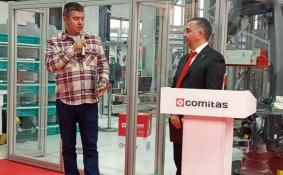Scientific & Practical Journal

Editorial News
Dear readers! In September the CeMAT RUSSIA exhibition was held, which showed everyone that innovations and robotics are increasingly penetrating the logistics industry. We can safely say that many technologies are tested here, and only then they go out into the world. However, it is not only CeMAT RUSSIA that demonstrates the prevalence of the digital agenda.
Dear readers! This is the ninth issue of the journal, which turned out to be very rich and diverse. Traditionally, the issue is opened by an analyst. The material by Alina Nasyrova from the Market Guide Agency, dedicated to investments in warehouse complexes in Russia, recalls the importance of developing logistics infrastructure for the integrated development of regions.
Dear readers! We present to your attention the eighth issue of the magazine and its materials.
PHOTO OF THE WEEK
CITATIONS
Development of a smart system to monitor and collect waste using the Internet of things technologies and evolutionary algorithms
Darya Skvortsova, Aliya Almyrzayeva, Yuliya Savinova6 / 2020 | PROBLEMS AND OPINIONS
Annotation. Solid waste management is one of the existing problems in urban areas and it is becoming a critical issue because of the rapid increase in population. In Russia, the process of waste collecting is not automated yet. However, waste collection by the traditional method, when garbage trucks travel around controlled territories on schedule, becomes ineffective in our cities: in some places, garbage bins remain empty or low-filled for a long time, while in other areas they are filled in a matter of hours. To develop an intelligent system for monitoring and collecting waste, it is proposed to use Internet of things technologies. At the same time, the search for the optimal route must be carried out taking into account not only the shortest path length, but also the level of fullness of the garbage truck tank, which is the task of combinatorial optimization, the so-called knapsack problem.
Key words. Smart city, Transport and logistics complex, IoT, Internet of things, Smart waste monitoring and collection system, Knapsack problem, Evolutionary algorithms.










